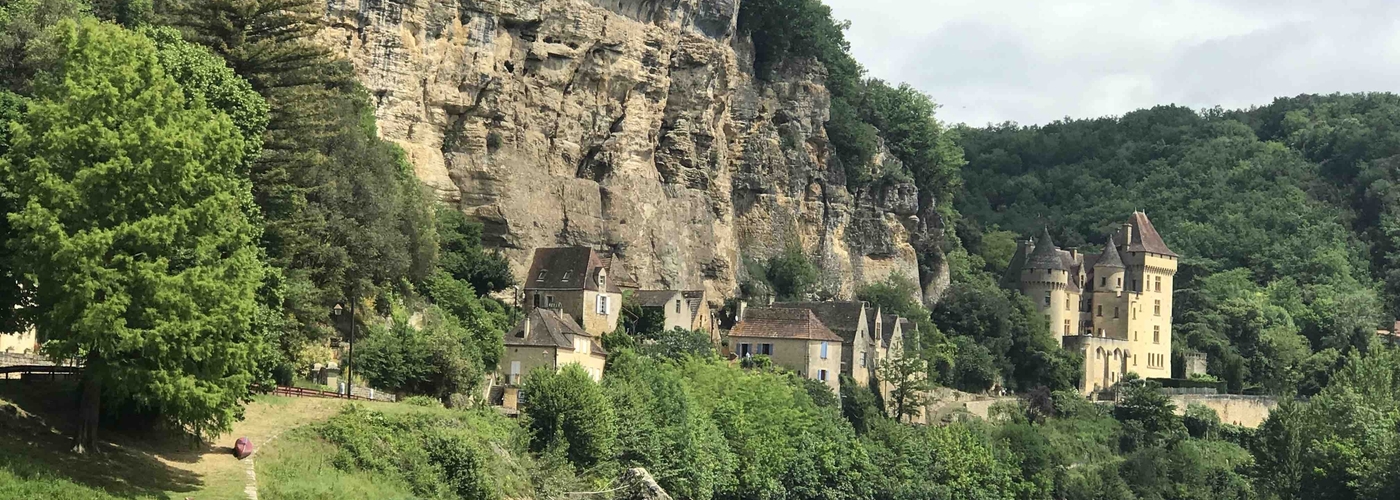Neil Sowerby explores the upper reaches of the river of plenty
PILGRIMAGES are not uncommon in the Dordogne. The region is on a main Camino de Santiago route and has boasted its own essential holy stop-off for 1,000 years, Rocamadour.
My quest was of a more earthly nature – to discover if French food really is a shadow of its former self. Rivals Spain and Scandinavia, with their own different approaches, have stolen much of its culinary thunder in recent years, while Italian produce fills everyone’s larders.
So valuable was walnut oil in medieval times it was used as currency
Surely the Dordogne, bastion of regional tradition, built on foundations of foie gras, confit and every speciality you can squeeze out of a walnut, would uphold the reputation of La Belle France (even if for a substantial period of its history it was ruled by England)?
It certainly has sublime terroir on its side, yet as it turned out the most interesting meal of the trip was served in a dull street in Brive-la-Gaillarde – what counts as a big city in this agricultural region, its airport the gateway to places more immediately touristique.
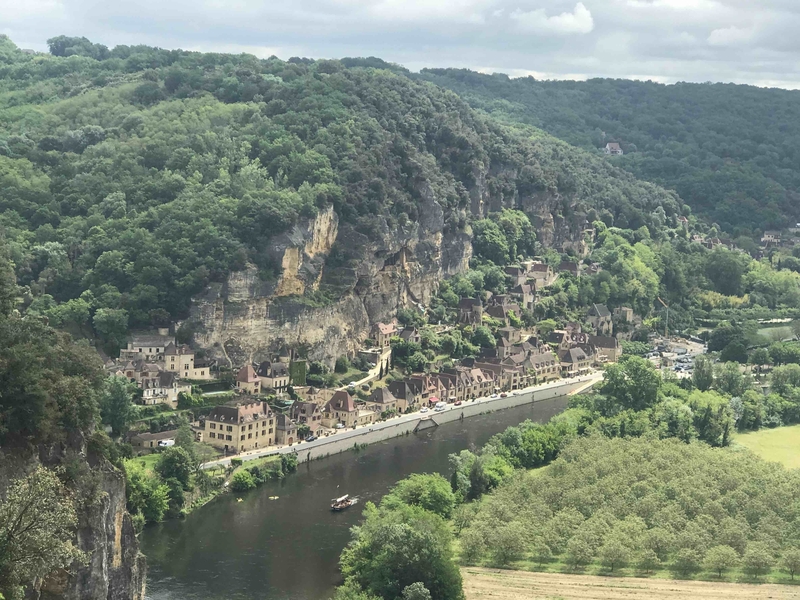
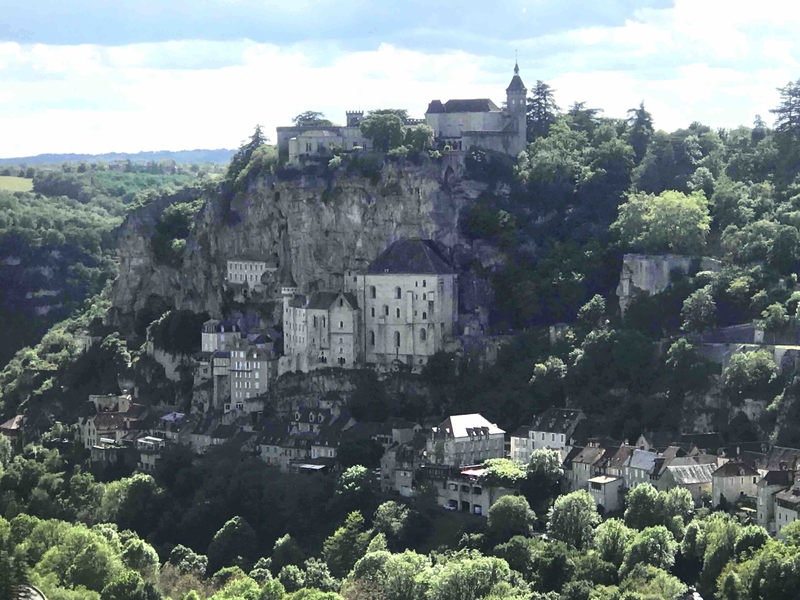
Martel is half an hour’s drive south, a harmonious melange of pale stone and red tiles, restaurants and cafes clustering around the rustically timbered 18th century market halle. Facing it is our introduction to the local cuisine, a bistrot called Le Petit Moulin.
Chef/patron Adrien Castagne’s mission is to celebrate local products. Even the wine we taste is from his own family vineyard – an organic Cahors. It’s softened by Merlot but is mostly Malbec, a reminder the grape existed long before Argentina monopolised it.
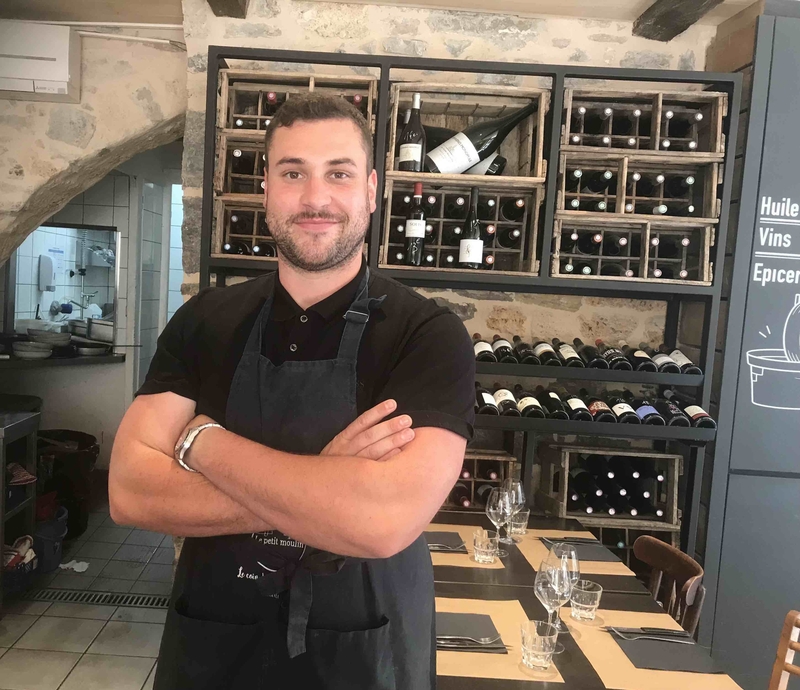

Of course, off the 30€ menu, I had to order a tranche of the family foie gras and it was sensationally creamy.
Across the cobbled square sits the turreted Maison Fabri, where in 1183 Henry Curtmantle, estranged elder son of Henry II, perished of a fever, thus speeding Richard The Lionheart to the throne of England and the rest is history, as they say. Hard to credit mellow Martel with such a turbulent past but it’s the reason the Dordogne features so many castles on crags.

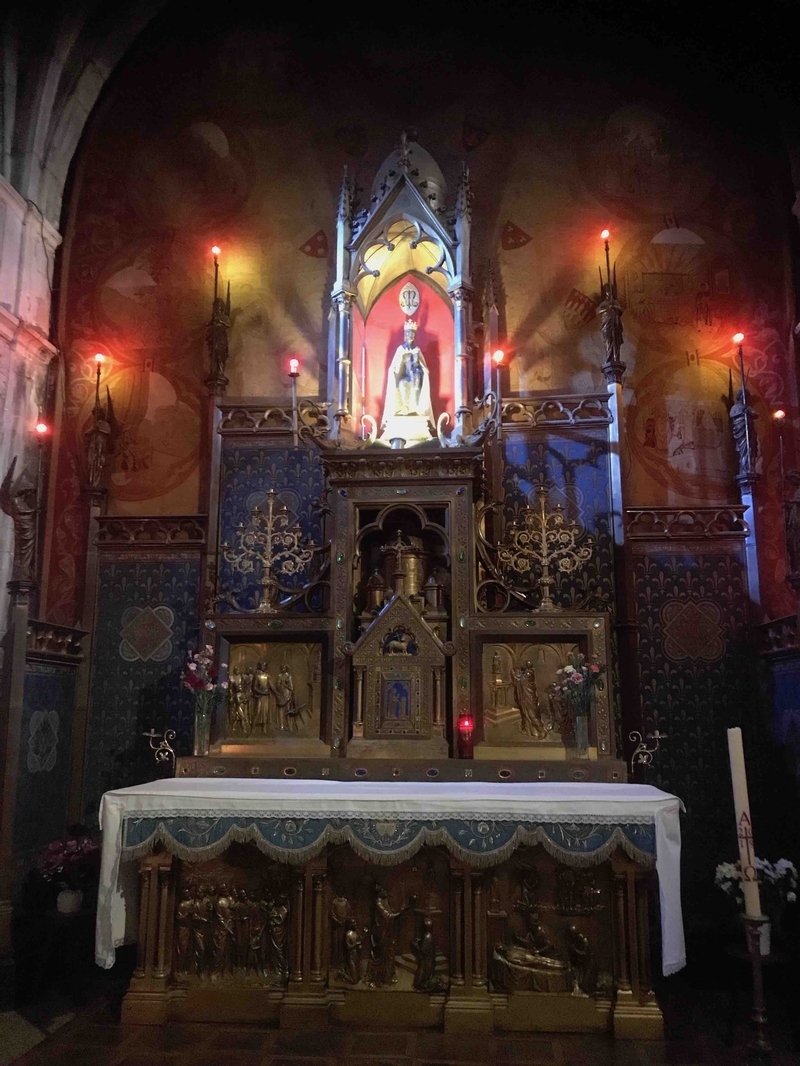
Even the Cité Réligieuse of Rocamadour is a cliffhanging fortified site, scaled by 216 calf-stretching steps called the ‘Grand Escalier’. Hard to credit that medieval pilgrims used to mount it on their hands and knees. Today’s funicular cut into the hillside was sorely tempting, but that rich lunch had to be worked off.
Out of season is the best time to visit the complex of seven sanctuaries, a UNESCO World Heritage Site, which attracts 1.5 million visitors a year. The big draw is the miracle-working walnut-sculpted Madonna in the Chapelle Notre Dame. Tourist emporia tat aside, the whole Rocamadour experience is spectacular, if a mite spurious. A sanctified fourth century hermit called Amadour is the alleged founder but he may well just be one of those Dark Ages figments.
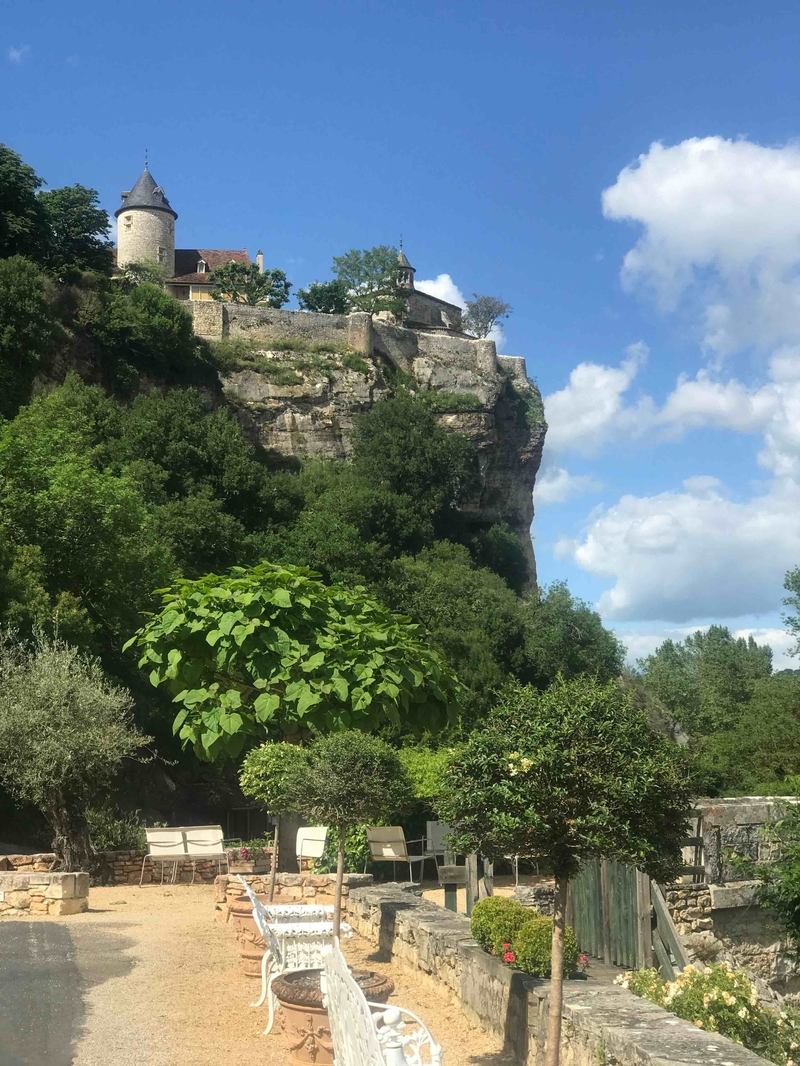
Rocamadour is not a place to seek out Michelin-starred dining. For that drive 20 minutes north west to the Pont de l’Ouysse. This quietly chic hotel, in the same family for five generations, is as delightful as its situation, alongside a ruined bridge (hence the name) over tributary of the Dordogne River. From my room terrace I looked on the perched castle of Belcastel to the sound of the rippling stream.
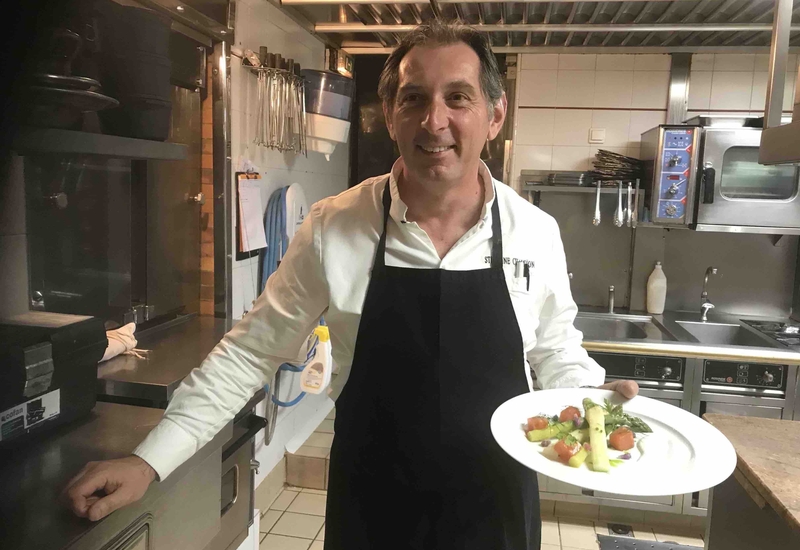
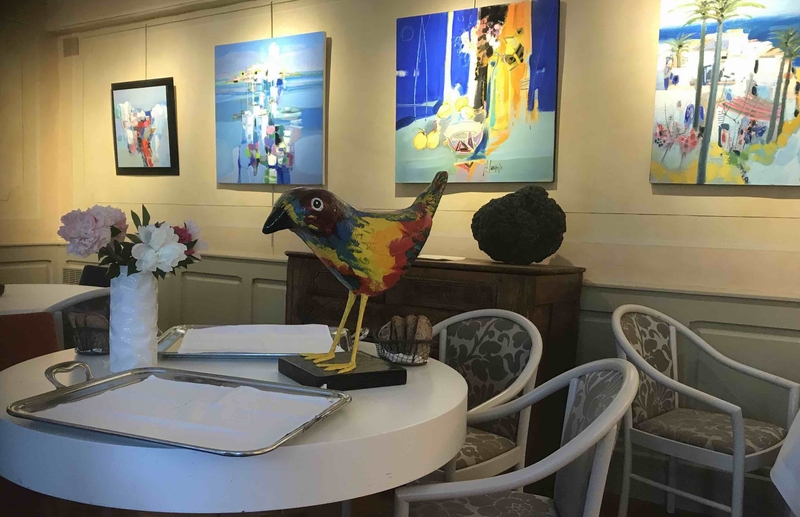
Chef Stéphane Chambon and his brother Matthieu, front of house, worked across the globe before returning to take overt this stalwart one-star establishment from their father Daniel. It is not cutting edge bells and whistles, mind. Stéphane’s focus is on extracting the maximum flavour from some seriously fine raw materials. A duck carpaccio oozing a walnut dressing sets the pattern for a beautifully balanced dinner. My only regret was that Stéphane’s celebrated Hare Royale wasn’t among the mains.
Both here in the river valley and further north in the Perigord Noir, around Sarlat, walnut trees dominate the landscape, as they always have. So valuable was the oil in medieval times it was used as currency, its health-giving properties have been equally treasured and in 2002 it was granted AOC (Appellation d'Origine Contrôlée) status, protecting its authenticity and quality.


It’s the traditional mills, strung out along the Route de la Noix and serviced by some 40 sq km of orchards, that really benefit. We popped in on the tiny Moulin de Maneyrol, where young Charlie Le Gallo presses award-winning artisanal oils after crushing with traditional grindstones.
Elsewhere, around Sarlat, the walnut products, (like the foie gras too) are manufactured on a more industrial scale. I enjoyed walnut cakes and breads but walnut wines and liqueurs weren’t really for me – even from the celebrated Distillerie Denoix in their historic Brive premises.

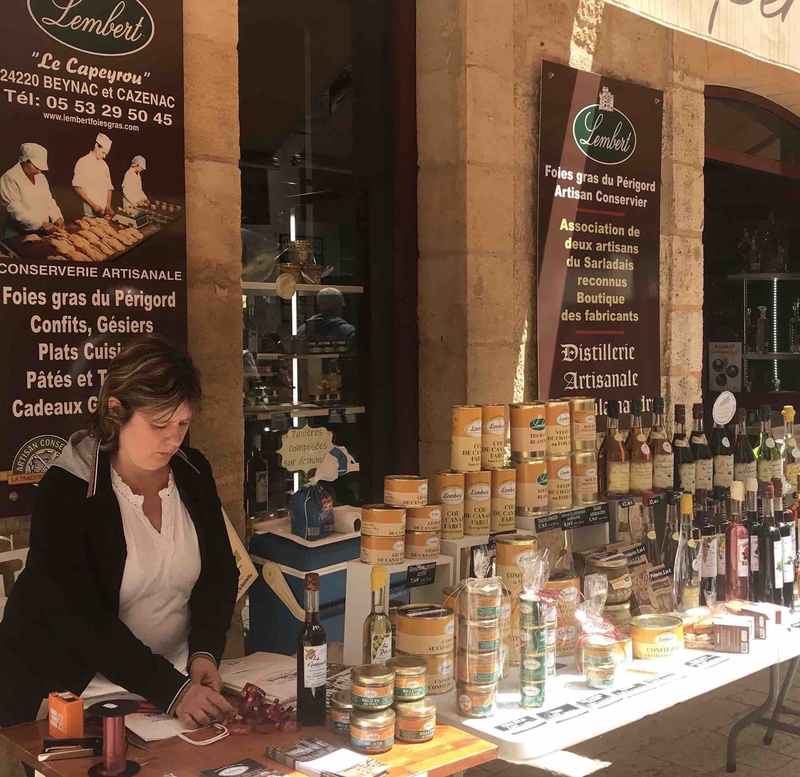
Sarlat-la-Caneda, to give it its full title, is much more bustling than of yore. On our visit in-season asparagus and strawberries joined the inevitable walnut oil, confit, magret de canard and foie gras in all its guises on market stalls beefed up for a ‘Festival du Terroir’.
Yet stray beyond the Place de la Liberté and surrounding lanes and Sarlat still charms. Behind the Bishop’s Palace you’ll find the curious, bullet-shaped Lanterne des Morts tower, built in the 12th century. Purpose? Lost in the mists. Its lawn was a perfect spot for my baguette of torched foie gras and a local craft beer.

The centre is full of eye-catching buildings, notably the narrow French Renaissance masterpiece, the Hotel de Maleville and the gabled, mullioned Maison de la Boetie, once home to the humanist poet Etienne de la Boetie, bosom buddy of the great French writer Michel de Montaigne. For a full view of the medieval cityscape with its signature ‘lauze’ heavy limestone roof slabs take the ‘Ascenseur Panoramique’ a glass-sided lift built into a church tower.
It is amazing how quickly you can be out of the city. Our evening dining destination, a ‘farm inn’ called La Garrigue Haute, was just a few miles away but felt quite remote. It runs along the lines of Italian agriturismos with everyone sharing dishes in a canteen-style courtyard. I was hoping for a real taste of the terroir but it felt disappointing. Definitely not a fan of gésiers de canard (duck gizzards) in my salad. A dip then on the Dordogne culinary spreadsheet.
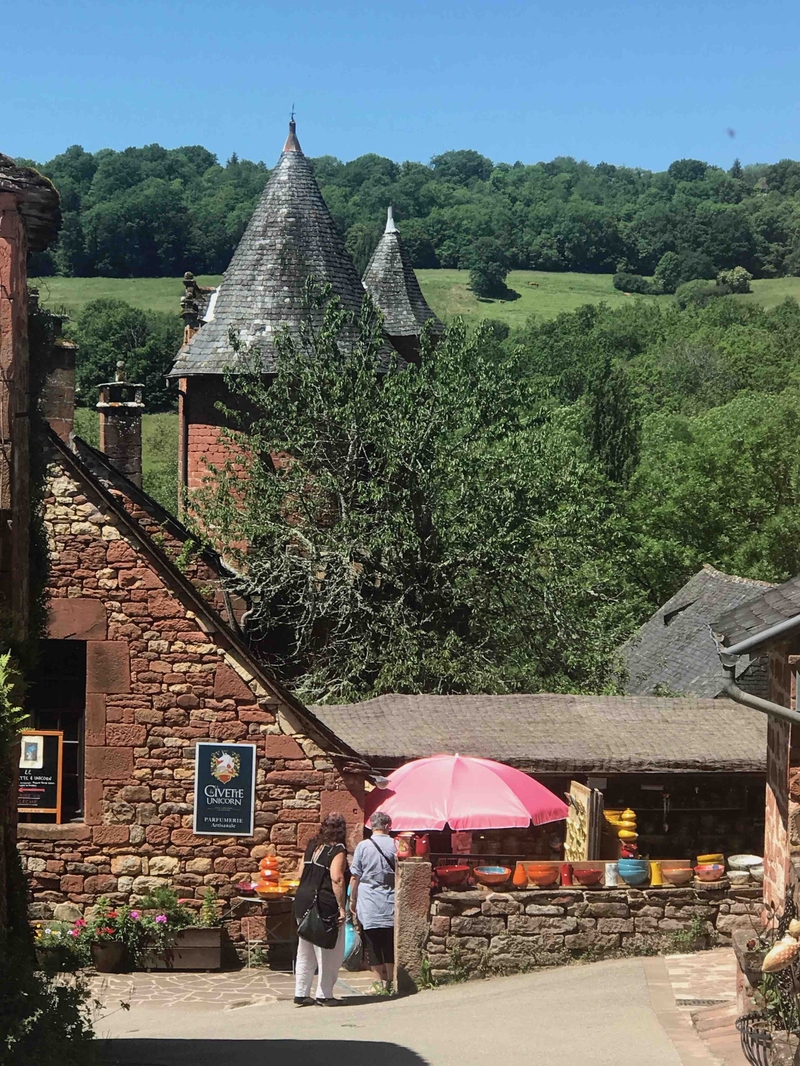
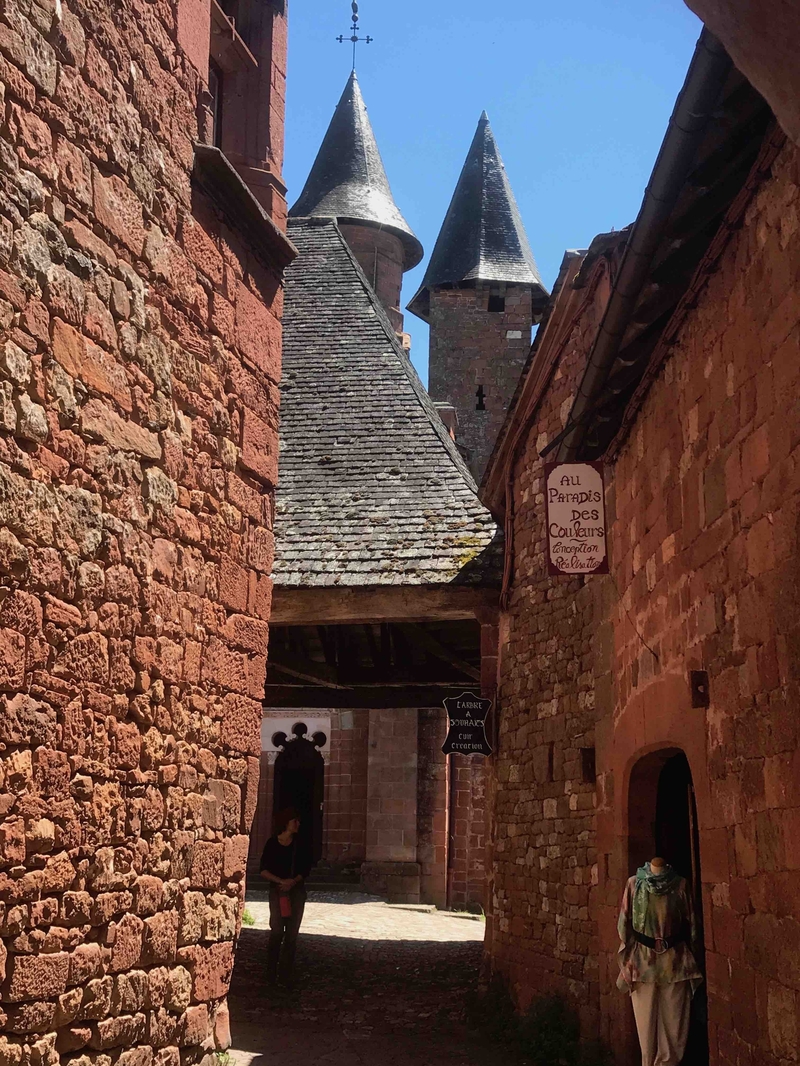
All was redeemed next day at Collonges-la-Rouge, prime contender for most beautiful village in the region. Swamped in high season, obviously, but even then manages an odd bucolic serenity, its sandstone houses and remaining towers glowing rosily among meadows and orchards.
It is so beautifully preserved because its original raison d’etre, wine, was scuppered by the 1880s phylloxera vive bug epidemic and it all fell into a long sleep until the Sixties when forward-looking souls rescued it from further dilapidation.
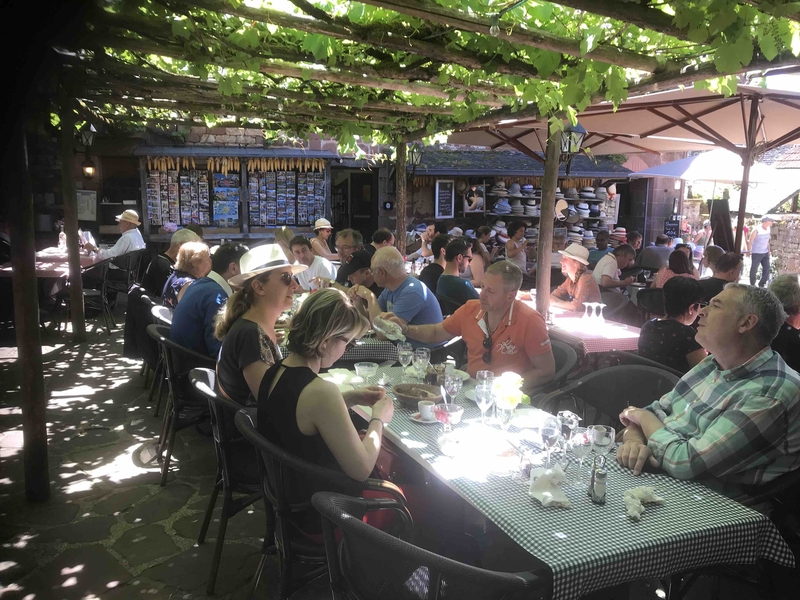
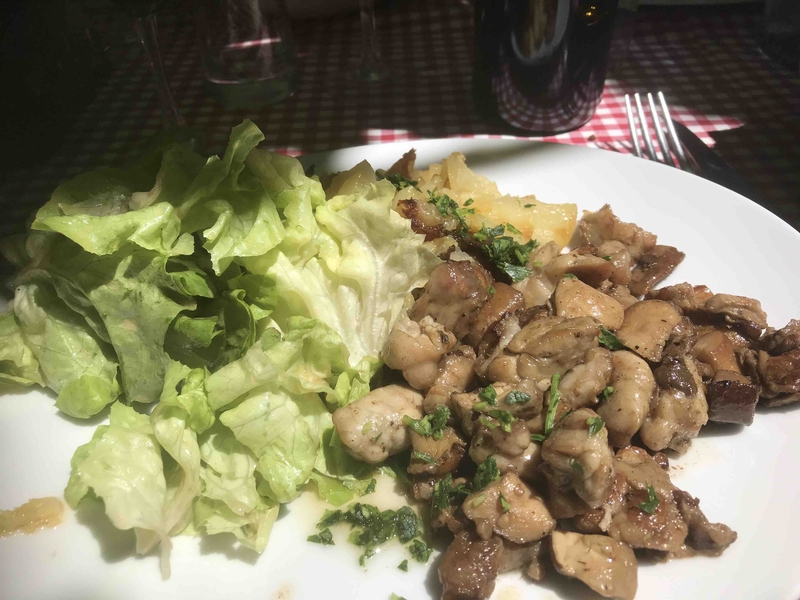
Among those saviours is Camille Breuil. Her restaurant Le Cantou is in a house at the heart of the hamlet that once belonged to her paternal great grandparents. Her own parents opened an inn here in 1961 just as tourism was starting to develop; she took over in 1985 and steered it towards gourmet dining. After perhaps the bets foie gras starter of the trip my main of lamb sweetbreads was divine, washed down with a classic Cahors red, Chateau Pineraie, on a vine-shaded terrace straight from ‘French Idyll, Central Casting’. I resisted the chance to take advantage of Camille’s other forte – a chic hat shop on site.

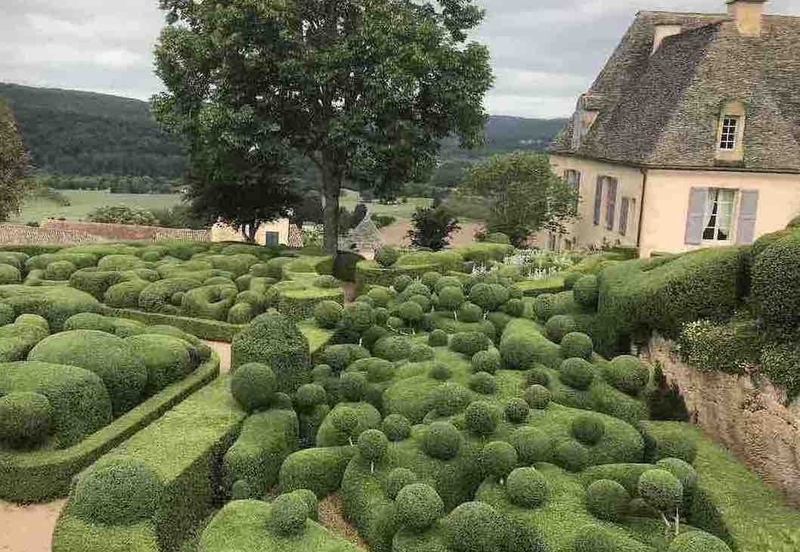
La Roque-Gageac would probably battle Collonges over that loveliest village plaudit. It is very different, its ochre houses spectacularly set into a cliff on the north bank of the Dordogne. Alas, the road that separates village from river is invariably rammed with tourist traffic. Do as we did and take a lazy 55 minute trip downstream on a motorised replica of the Dordogne’s traditional ‘Gabares’ river boats. The more energetic could hire a canoe and take in the village spectacle from the opposite bank.
Actually the most stunning view is from the high belvedere of Les Jardins de Marqueyssac a couple of miles away. Walk through a maze of 150,000 topiary boxwood trees, surrounding a rather modest 17th century chateau (its castle neighbours are all more monumental). Beyond the peacock-haunted formal gardens you’ll be rewarded with vertiginous views of La Roque-Gageac, the river and beyond.
The views are splendid too, from the main terrace, of this landscape dotted with Chateaux – Fayrac, Beynac and Castelnaud (whose owners restored Marqueyssac).
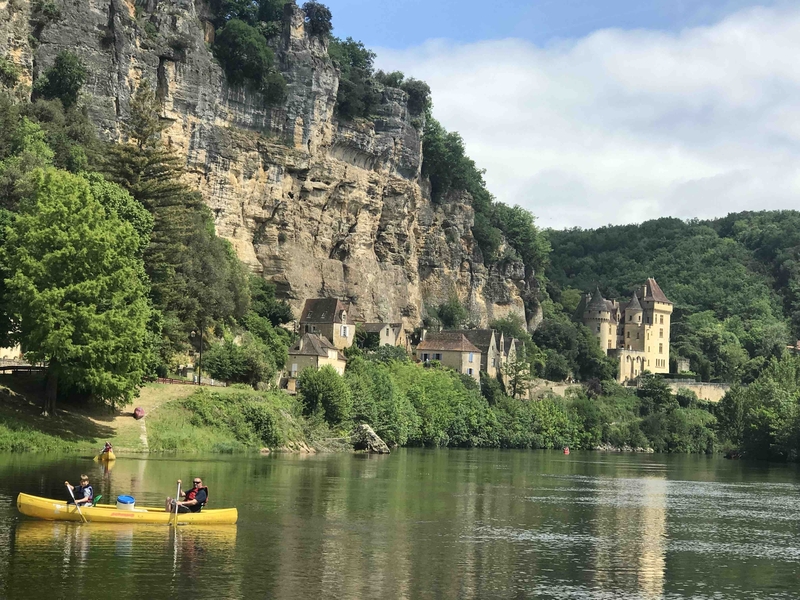
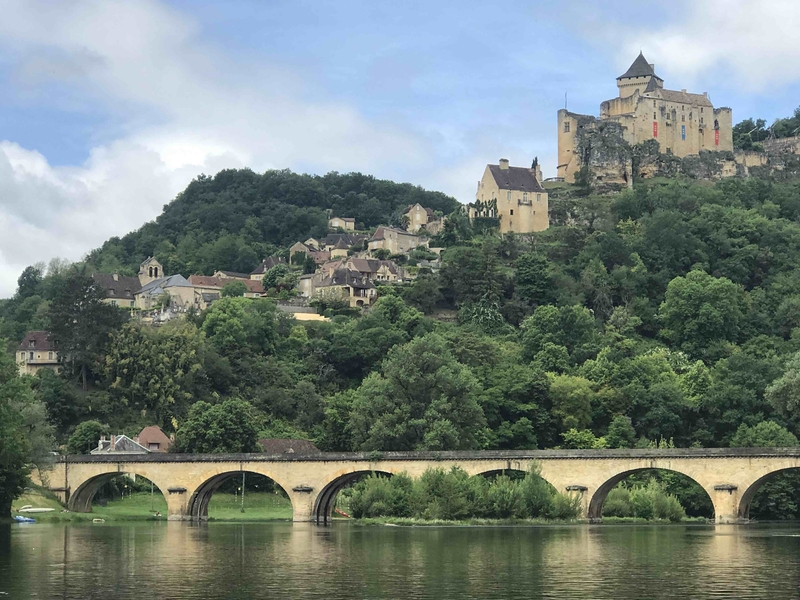
The region does deal in the spectacular but it dances to a quieter beat in towns such as Terrasson-Lavilledieu with its Romanesque stone bridge across the Vézère or villages such as Curemonte with its niche drinks offerings – ‘straw’ wine and dandelion liqueur, best sipped on the ridge with a view of the picture-perfect hamlet.
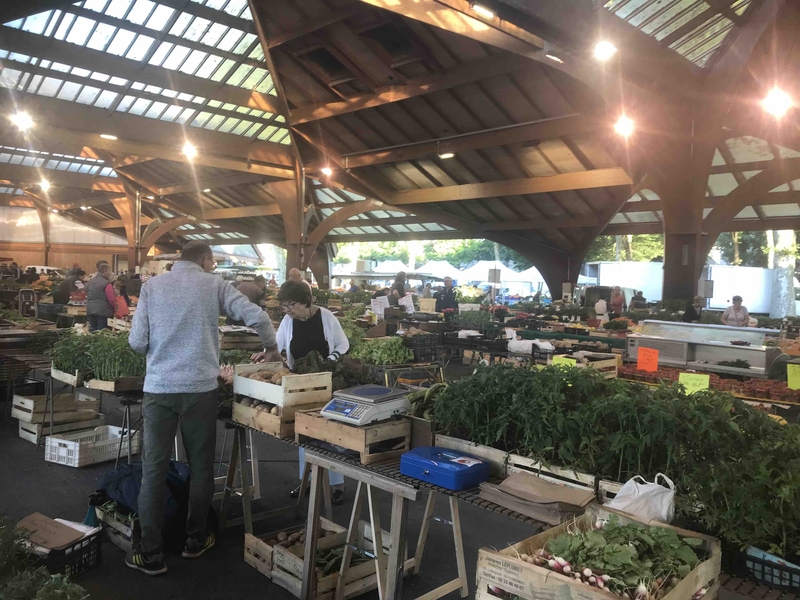
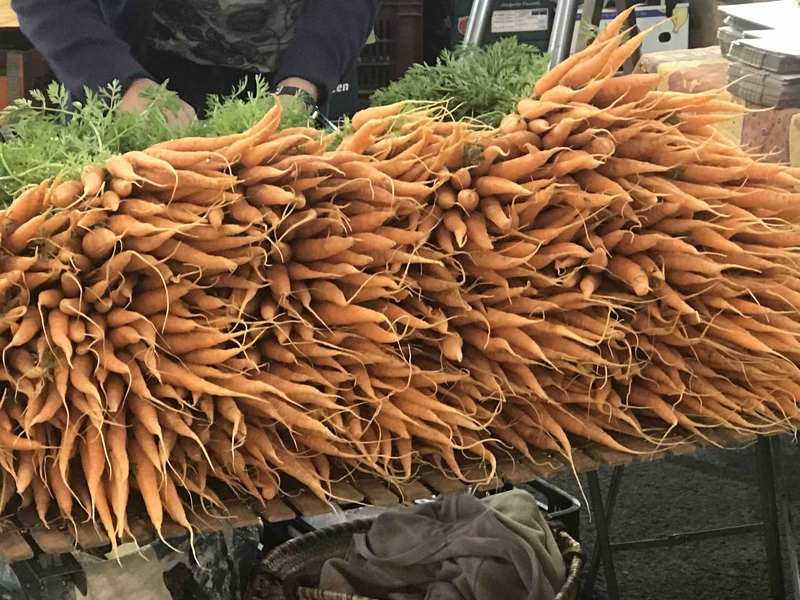
No one would call Brive picturesque, but I loved walking into its well preserved centre at breakfast time just as they were setting up the market, live chicken stall and all.
The Marché Georges Brassens in the Place de de la Guierle calls itself as the droll Fifties chanson singer, who name-checked the town in a 1952 song, Hécatombe, about a market brawl.
Open on Tuesdays, Thursdays and Saturdays it’s a more laidback place, give or take a spot of haggling. Workaday rather than Sarlatesque touristique, it is a reminder of the splendid fresh produce the French take for granted.
If that was a clincher for traditions being upheld, our dinner destination was proof that open-minded chefs exist too to take advantage.
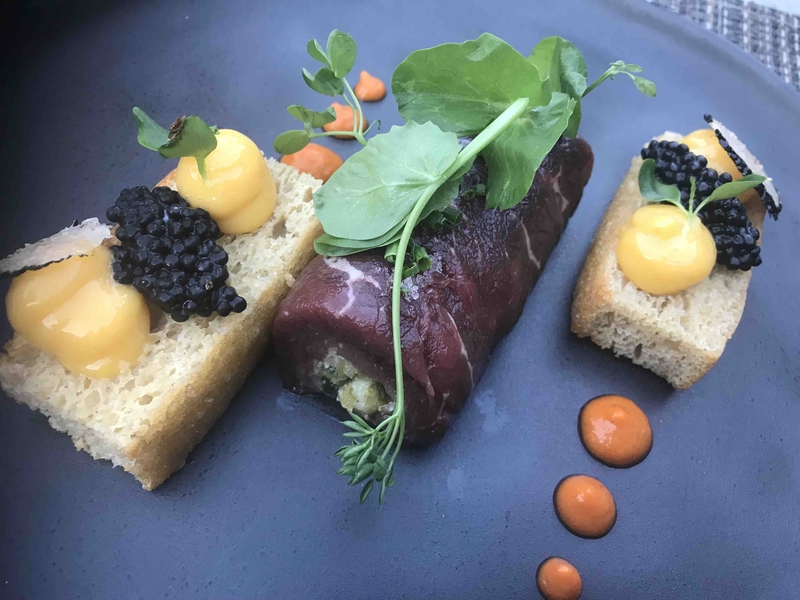
Maybe Nicolas Eche would baulk at a ‘fusion’ tag but the menu at his bistrot En Cuisine is not afraid to add exotic spice to its market-driven raw materials and yet also here are French classics, pig’s trotters and ris de veau, delicately deconstructed versions. The wine list supports regional wines that often go under the radar in the UK. A red Pécharmant Les Hauts de Corbiac was the perfect accompaniment to both my Limousin beef carpacccio with herring eggs and, a poem in itself, a main of ‘Veau, bas carre confit et grille, legumes du moment, curry vert, royale de moelle’.
So veal ‘several ways’, seasonal veg but with bone marrow and a Thai-inspired green curry. France still rules – with a little assistance from the global marketplace, naturellement.
Fact file:
Neil Sowerby flew from Stansted to Aeroport Brive-la-Gaillarde with Ryanair.
To catch an early flight he stayed overnight at Travelodge Stansted Bishop Stortford, Birchanger Ln, Birchanger, Bishop's Stortford CM23 5ST. Take advantage of their discount taxi deal to get into the airport, which is a 10 minute ride away.
He stayed at three hotels across the Dordogne – Le Pont de l’Ouysse, D43, 46200 Lacave; Best Western Hotel Le Renoir, 2 Rue de l'Abbé Surgier, 24200 Sarlat-la-Canéda; and the quirkier, boutique-style Le Miel des Muses, 21 Avenue Jean Jaurès, 19100 Brive-la-Gaillarde.
For tourism information on individual destinations visit these sites: Correze, Lot, Sarlat, Vezere, Brive; and for the region in general Enjoy Dordogne and the Dordogne Valley.


